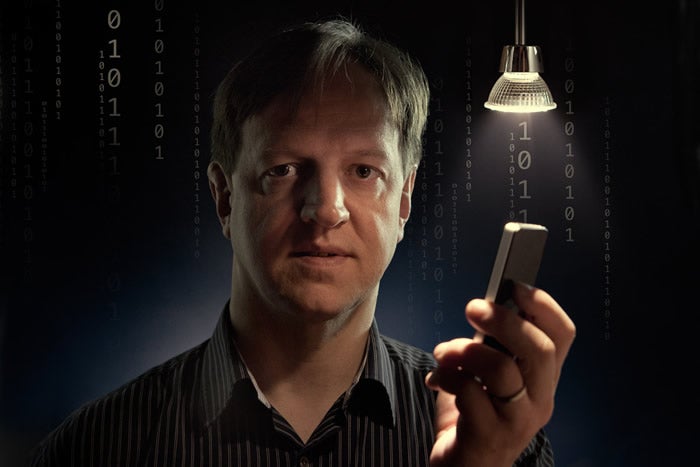Li-Fi revolution: internet connections using light bulbs are 250 times faster than broadband
The next generation of wireless internet could use converted LED lightbulbs to transmit data faster and more cheaply than traditional Wi-Fi signals

Li-Fi, an alternative to Wi-Fi that transmits data using the spectrum of visible light, has achieved a new breakthrough, with UK scientists reporting transmission speeds of 10Gbit/s – more than 250 times faster than ‘superfast’ broadband.
The fastest speed previously reported was 3Gbit/s, achieved earlier this year by the Fraunhofer Heinrich Hertz Institute in Germany. Chinese researchers also claimed this month to have produced a 150Mbp/s connection, but some experts were doubtful without seeing further proof.
The term Li-Fi was coined by Edinburgh University's Prof Harald Haas during a TED talk in 2011 (see below for video) though the technology is also known as visible light communications (VLC).
Many experts claim that Li-Fi represents the future of mobile internet thanks to its reduced costs and greater efficiency compared to traditional Wi-Fi.
Both Wi-Fi and Li-Fi transmit data over the electromagnetic spectrum, but whereas Wi-Fi utilises radio waves, Li-Fi uses visible light. This is a distinct advantage in that the visible light is far more plentiful than the radio spectrum (10,000 times more in fact) and can achieve far greater data density.
Li-Fi signals work by switching bulbs on and off incredibly quickly – too quickly to be noticed by the human eye. This most recent breakthrough builds upon this by using tiny micro-LED bulbs to stream several lines of data in parallel.
The research was carried out by the Ultra Parallel Visible Light Communications project, a joint venture between the universities of Oxford, Cambridge, Edinburgh, St Andrews and Strathclyde, and funded by the Engineering and Physical Sciences Research Council.
Existing LED light bulbs could be converted to transmit Li-Fi signals with a single microchip, and the technology would also be of use in situations where radio frequencies cannot be used for fear of interfering with electronic circuitry.
And although Li-Fi bulbs would have to be kept on to transmit data, the bulbs could be dimmed to the point that they were not visible to humans and yet still functional. One draw-back is that the data receiver would have to be in sight of the transmitter-bulb as visible light does not penetrate solid materials.
The makers of Li-Fi note that this quality might actually be an advantage in some scenarios, making Li-Fi more secure than Wi-Fi with hackers unable to access unsecured internet connections from out of sight of the transmitter.
Subscribe to Independent Premium to bookmark this article
Want to bookmark your favourite articles and stories to read or reference later? Start your Independent Premium subscription today.

Join our commenting forum
Join thought-provoking conversations, follow other Independent readers and see their replies